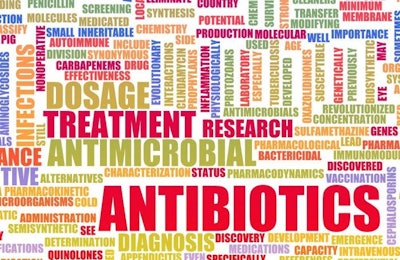
As I was compiling the data for WATT Global Media’s 2016 Nutrition & Feed Survey, an annual report focused on feed trends from around the world, Alltech hosted a webinar focused on the relationship between antibiotic resistance and animal agriculture.
During “The path of least resistance” webinar, Dr. Richard Murphy examined the critical issues surrounding antibiotic resistance, animal protein production’s role in perpetuating it, and outlined strategies for livestock producers to position themselves for an AGP-free era.
As instances of antimicroial-resistant bacteria and its ties to agriculture are on the rise, the significant threat to human health becomes very real, e.g. resistant colistin that spread from animals to humans in China.
Unfortunately, a Princeton study estimates that the global use of antibiotics in animal production will increase by more than 60 percent between 2010 and 2030 — a trend driven primarily by usage in “BRIC” countries. (For those not in the know, BRIC stands for Brazil, Russia, India and China.)
“I don’t want to sound sensationalist, but without efforts to reduce reliance on antibiotics in livestock and animal production, we could be heading for an apocalypse scenario,” Murphy says.
Unfortunately, the drug industry and its incentive to develop new antimicrobials stalled decades ago. Even the current effort to develop a new antibiotic wouldn’t treat the AB-resistant, gram-negative bacteria transmitted through human foods.
How can animal agriculture act responsibly to mitigate this risk?
Unfortunately, much of the damage has already been done, but in an effort to curb the spread of resistance, “the fight must start on the farm,” Murphy states.
“No doubt producers – and not regulators – will revolutionize the livestock and poultry industries,” he says.
Proactive antimicrobial reductions
As regulation is slow to get going, producers – and the feed industry – are already planning and implementing AGP-free production practices.
“If we can’t eliminate antibiotics from production completely, we can do our best to reduce transmission of antibiotic-resistant bacteria into the food chain,” he says.
The proactive elimination of antimicrobial from animal production was highlighted by the results of our Nutrition & Feed Survey.
According to respondents, 24 percent of survey respondents report that their company has taken immediate action to reduce or eliminate the use of AGPs in their poultry operations. Nearly 35 percent cite that the movement toward antibiotic-free production will be the focus of upcoming strategic meetings. Others have taken steps to test the waters before implementing AGP-free feeding by hiring a nutrition consultant (18 percent) and testing the new formulations/additives on their flocks (27 percent).
In fact, of the nearly 300 respondees, 17 percent reported 100 percent antibiotic-free production and an additional 26 percent note 50 percent of more of their company’s production being antibiotic free.
AGP elimination in practice?
Feed additive trials are increasingly demonstrating the viablilty of alternatives to direct-fed microbials, such as enzymes, prebiotics and phytogentics.
Survey respondents report using organic acids (61 percent) as their primary AGP replacement additive. Enyzmes and probiotics tied for second (59 percent). Perhaps unsurprisingly, it seems that phyogenic feed additives lag behind (34 percent) in their popularity despite the relative benefits reported by those using them in their AGP-free formulations.
While these feed additives promote “mechanistic changes in digestive processes or physiology,” they are only part of a strategic nutritional management program – one that requires customization, Murphy concludes.
Looking for an in-depth examination of the AGP-free formulation and production strategies implemented by survey respondents? The full survey results will run in June 2016 issue of Feed International.















